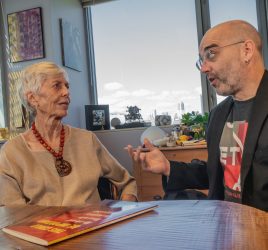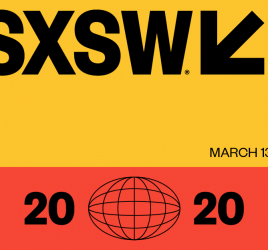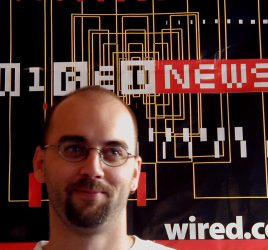The Science of Big Group Learning
Ask any college student and they will tell you this: Group work sucks.
The reason: In a group of four people, the workload generally breaks down like this:
- 1 person does nothing, who angers…
- 1 person who controls everything, who annoys…
- 2 people just trying to survive the process.
Put students into groups, and you immediately see the agonized looks on their faces.
“How are you going to grade this,” they ask.
“It’s one grade, and I don’t want to hear about any problems in your group,” the professor responds.
In all honestly, how these small groups are run are both a crappy way to teach and learn.
Group work is important, though. There’s very little that is done in creative industries that doesn’t involve group work. So we can’t just abandon it.
What I’ve started to work on is creating better learning groups. I’ve done this by eliminating small group work, and replacing that with large group work. Rarely will I use the 4-person group. Instead, I’m looking for ways to get an entire class working in parallel to solve on problem.
Here’s my latest (and best) example:
I have 19 students in my Trans Star Wars class. Two are designers, and 17 are content creators with experience in writing, photography, and filmmaking.
The project:
- We needed to create multimedia profiles, i.e. text, images, information graphics, videos, of various organizations and people in Indiana for a tablet-based application.
The decisions we needed to make:
- Who would we profile
- What types of media would we use, e.g. intro video files or text bios
- What would the design of the sections look like
You can’t create a tablet media property without going through these steps. Before we got started, we needed to make a working prototype with actual content that would serve a guide for every other section we built.
The problem:
- How do you take a group of 19 students, most of whom don’t know each other, and create a system in which everyone in the group has input without slowing down the design and development process.
- Oh, and finish the creative process in 9 weeks.
While students were assigned to small project groups for the media creation component of the class , the bulk of what we did consisted of individual work that was consolidated through large-group exercises.
To do this, I’ve used basic Human-Computer Interaction design frameworks, e.g. the lifecycle design model, and adapted the consolidation frameworks used in large-scale usability studies.
Group Work: The Wisdom of Crowds
Before we started our project, students did preliminary research on the potential content for our tablet-based app. Each individual (and each small group) developed a working list of people and organizations we might profile, and they did preliminary interviews and content collection.
Instead of openly debating the merits of each, I used the basic science behind the Wisdom of Crowds.
Groups created a 1-page description of each group/organization, and submitted that to me. I compiled all the research, and distributed that to the class.
Then I created a blind survey that allowed each person to rank in order the potential list, and using a Likert scale tell how important they thought that particular element was. I also allowed them to recommend groupings.
(The “blind” part is important. If you do this in class, groupthink sets in and the results are oftentimes skewed.)
The survey results created a ranked list of what the class felt was the best content (and gave me a decent indicator of what the students though was really cool).
By using some basic frameworks, I was able to include everyone’s ideas in the mix, and then take the best of those ideas.
This achieves three important goals:
- forces everyone’s participation, which makes for a better product
- it doesn’t reward extroverts and punish introverts
- gives us data to make group decisions.
Group Work: What To Make
Once we decided upon what would go into the project, we created another survey to decide what types of media we would create.
Each project group, which was assigned 1-2 of the content areas decided upon in the last survey, had 2 weeks to collect information from their sources. This meant shooting video, getting digital assets, writing bios, and designing basic information graphics.
At the end of the two weeks, each group presented a paper prototype to the class illustrating how they would showcase their stories. There was little discussion during those presentations although everyone was allowed to ask a question.
The only instruction: make notes of what you would want to include based upon everything you saw.
At the end of the prototype session, I collected the list of “elements” from the class, and set up a survey.
Once again, everyone ranked their favorite ideas, and we had a discussion to make sure what we wanted to do was feasible.
In just a few days, we had a working prototype of our tablet-based app, and we had gotten through all of this in just a few weeks, giving us plenty of time to work on developing the content.
(It’s important to note: We didn’t start creating content until 4 weeks into the 9 week process. We spent a month developing a complete and comprehensive prototype.)
Group Work: Discussions
By this time, the students anticipated our in-class discussions to be centered around data (and not opinion). We could look through the survey results, which were distributed along with the research packets assembled by groups at the start of the semester.
In these discussions, three things happened:
- I drew prototypes of the media on the board so that we could visually agree with what each element would do
- We discussed the merits of survey results as they applied to each section; elements that didn’t work for ALL sections were discarded, and the next element on the list was moved up
- The designers would help us visualize these early prototypes.
From this list of elements, which each project group would need to replicate for its section, groups were given a checklist (with full digital specs). They also had the prototypes of what was expected of them.
From there, the groups spend 5 weeks (without supervision) creating content, and building a digital asset database that was shared with the designers. (Only final assets were shared as the designers don’t need to see every draft of every biography written).
Because everyone had been involved in this outline/prototype process, we had no issues during the creative process. Whenever something would fall through, groups knew exactly what type of content they needed replace.
Group Work: Usability
Since we’d developed our media in a large-group environment, our teams delivered nearly perfect media drafts . Each group leader sat down with one of the designers, went through the checklist, and made sure the content was 1) complete, and 2) labeled correctly.
This entire process happened in 9 weeks. (I’ll update this with the number of media assets created. Rest assured, you will be impressed.)
The next 7 weeks were dedicated to prototyping and usability. The design team cranked out prototypes, and each individual in the class was trained on basic usability tests. We will do three:
- Cognitive walkthroughs
- Heuristic evaluations
- Usability tests
We once again used a survey to develop the usability tasks, and those were distributed to individuals within the class. Each person was responsible for their own findings.
This time, however, I wanted to teach the students how to consolidate information in real time, since many businesses (mistakenly) think that you need to do this exercise in person.
The students were broken up into two groups (because we didn’t have enough room for 17 students at one white board).
Before they came to class, they were given a set of tasks to evaluate.
One consolidation day, they each brought their problem statement findings in on small slips of paper, and they were given this instruction.
- Tape your findings to the wall. Then begin to group them. Then come up with a large organizational name for each of those groupings.
Those two groups then had to take those groupings, and create one final grouping of information.
The result of this process was a single 3-page document that broke usability problems into big categories, e.g. Navigation, specific problem statements, examples, and recommendations.
This happened in one class period (and as you can see, I was standing outside the room after the instructions were given).
The designers, who were continuing to work on the tablet-app, didn’t need to worry about user testing and fixes. We were handing them completed evaluations with recommendations.
Once again, we used large-group dynamics to create a better experience.
What It’s All About
The point of this class (from a teaching perspective) was to teach students how to use basic science frameworks for information gathering and apply those to large-scale projects.
Too often, we try to break complex problems into smaller problems. This seems logical and simple. There are two issues with this:
- Small groups create “communication walls” that hamper projects; and
- You aren’t getting all the data you could if everyone was included.
The result: we lose the large-group thinking that enables us—early on—to develop more creative solutions and better products.
Certainly the designers were very good at helping us parse out design problems, but our storytellers were very good at telling stories. Putting everyone in a room together from phase 1 of the class allowed the best ideas to rise to the surface. This made creating media easier (they knew what to get), and it made designing easier (they had uniform content).
This process involved every member of the group in every step of the decision-making process. When we did have small groups, they were created around specific skills to do specific tasks, e.g. make content.
It’s not easy to manage this process. The teacher must be vigilant early on in organizing all the information into surveys that gatheractual and usabledata. Once that begins to happen, though, amazing products emerge.




2 comments